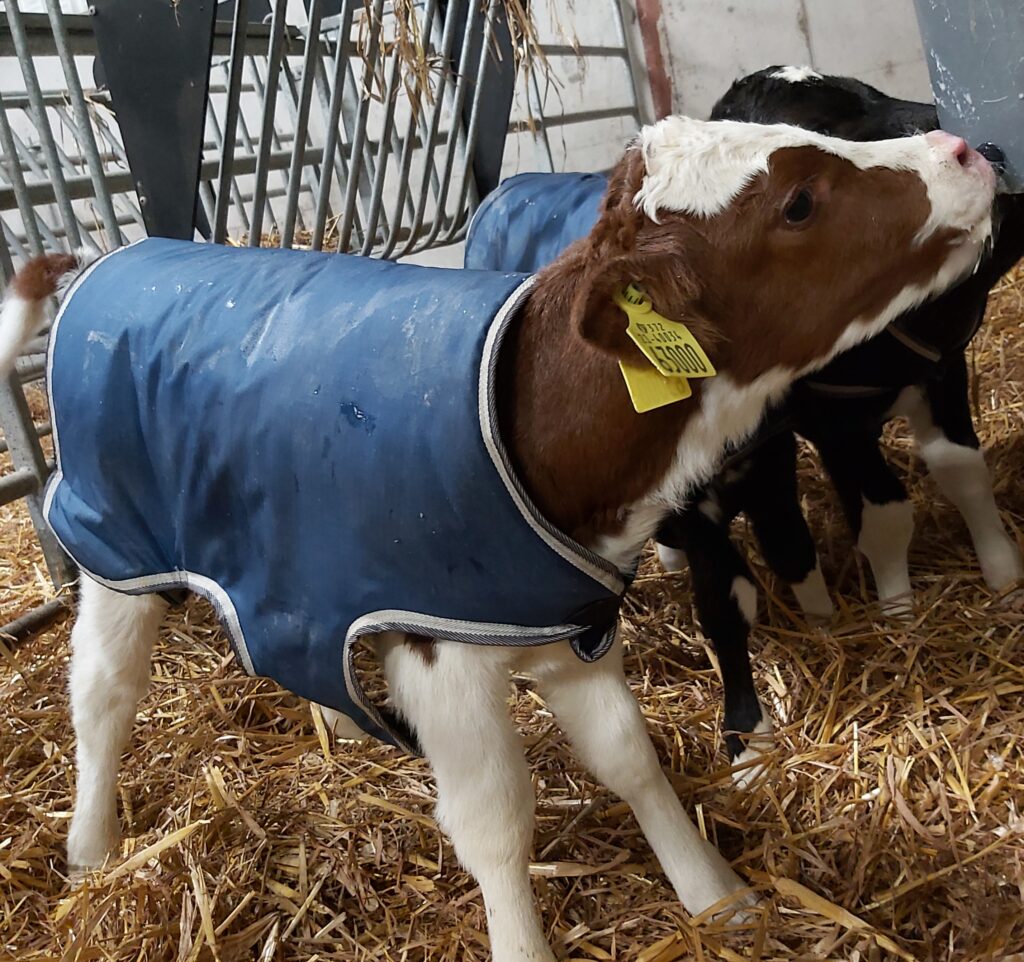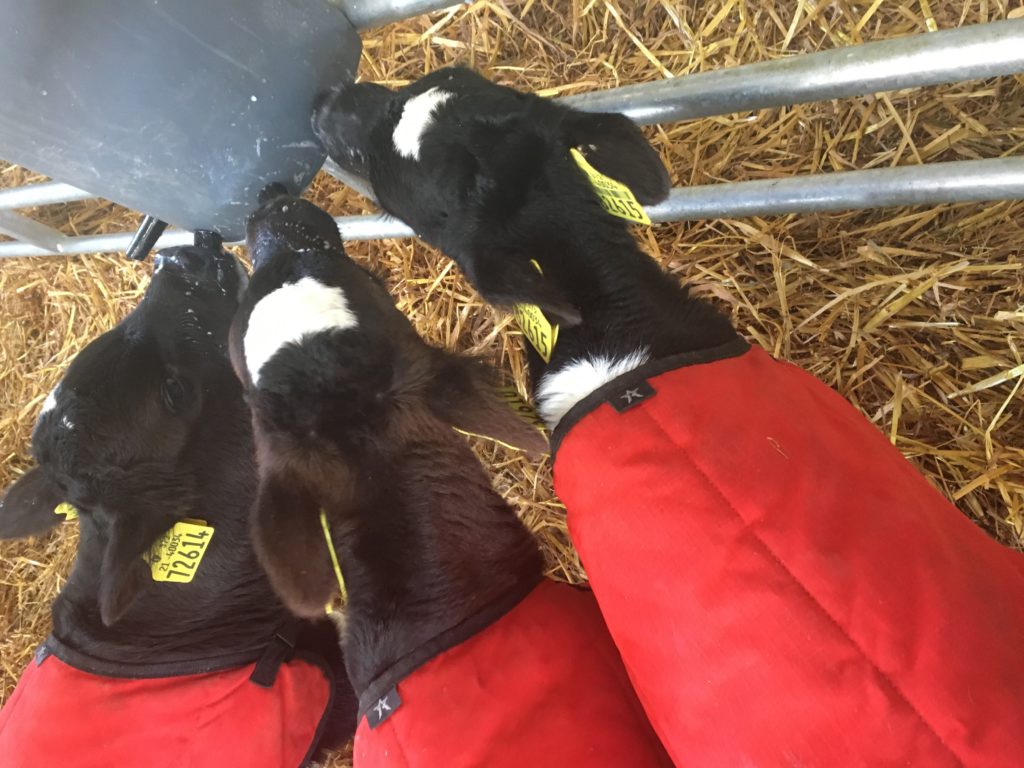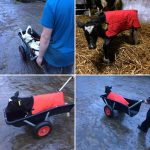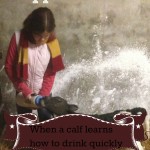
Back in 2019, I wrote about our experiences with calves experiencing severe bloat and nearly dying as a result of contaminated milk powder. It ended up being a very long post, but because I’ve spoken to so many other farmers about it, as well as vets, the Dept of Ag and the DVO, I decided to write an update. I intended writing it last year but with doing a new milking parlour, I never got the time. As we’re coming into calving season now, it seems good timing to update it.

Summary of Events on our Farm
20 calves, 6 weeks of age, 7-10 days after starting on milk powder, got severe bloat over a week. Would have died overnight (why it affects them in the evening moreso I’d love to know) if we hadn’t noticed two calves one night and then did ‘bloat checks’. The most effective treatment was lifting calf back onto its haunches and inserting the tube of the stomach tube down, and waiting for the gas to come up. Not the easiest when they are 6 weeks old and strong calves.
The milk powder company came up with every imaginable excuse, most of which were my fault apparently. Honestly, I went from feeling so guilty to feeling I was going mad. Endless calls to the vet. Feeling totally inadequate and that I was failing my calves.
We changed milk powder and the calves transformed in days. Went from being sluggish and lethargic with dull coats and no enthusiasm at feeding time to having glossy coats, full of vigour and bounce.
We got the milk powder tested and the results showed that it contained 30 cfu/g of clostridia perfindens. Now, I was told later that apparently that isn’t enough to kill a calf (I’m still awaiting the link to show me the evidence of this) but considering they were drinking 700g per day, the amount of clostridia present sounds significant to me.
Other Farmers Experiences
I’ve had so many farmers contact me with bad experiences of losing calves due to bloat (and they believe it is due to the milk powder). There are at least seven brands out there which have caused farmers considerable angst not to mention selling products that causes pain and discomfort to calves, often leading to loss of life. One brand is so aware of what they are selling that a rep will call out once a farmer reports a problem with bloated calves, have a look, say ‘oh, that must be a bad batch’, replaces it and throws in a few free bags for the inconvenience. That’s their product testing! Grrr
Now, some companies are very good, stand over what they sell and produce a good product. I don’t want to tar them all with the same brush.
The thing is, death from clostridia can be caused by so many things it is almost impossible to prove what the cause is. The Dept will call out to test everything from the water to the ration to the straw. Obviously, another cause is lack of cleanliness or a calf taking too big a feed.
At the moment, there doesn’t seem to be a testing facility in Ireland and as all milk powders are imported, this means going back to where it is produced, and the company themselves testing that batch.
My Advice for What It is Worth
I’m not a vet. I’m not saying I’m an expert. But I did my best to find out what was wrong with my calves and if this post helps any other farmers out there, my job is done. The worst is when you feel that it is your fault. The guilt!
If you get bloat in calves when feeding them milk powder, this is a check list – in no particular order:
- Put new teats in all feeders each season. Even if the teats look fine from the previous season, replace them. There could be all sorts of gunk in each teat just waiting to wreak havoc.
- Check teats regularly. A torn teat can result in a greedy calf taking too big a feed.
- Clean feeders regularly. I don’t wash them daily as they are cumbersome 10 and 12 teat feeders and as the calves get hardier, have to be tied to the gates or they get knocked off. I wash 3 or 4 daily so each one is done every 3 days. I wash in scorching hot water and washing up liquid and dip each feeder into a barrel of disinfectant. This year, I have a snazzy little power washer, it’s going to make life so much easier.
- Make sure calves have access to clean water and ration, and that they are bedded well.
- Mix the right quantities of powder and water. Some companies argue that being fed at the wrong temperature could cause bloat but as our vet said, if a food product can cause severe illness or death from being fed cool instead of warm, it shouldn’t be on the market. I now have one tap that supplies water at exactly the right temperature for mixing the powder so I’m not playing around adding x amount of hot and x amount of cold.
- Check best before dates.
- Check feeders at the right height for the calves.
- If you haven’t had any problems with a particular brand, stick with it.
- Never buy from a rep that drives into your yard with a cheaper deal. You get what you are paying for.
- Never pay in advance. Wait till you’ve used some of the product before parting with any money.
- It often happens that farmers nearby will be supplied by the same rep. Two farmers from Waterford contacted me separately in 2019, I put them in touch with each other and they were using the same product. It turned out 7 farmers in that area were having problems, all using the same product. You have much more bargaining power when arguing with a company when there are seven of you rather than just one. Threaten to write letters to the farming papers too. Don’t put up with any sh1te. So contact farmers in your area or ask on Twitter or in a Facebook farming group if any farmers have had problems with x brand of milk powder. But obviously, do check all the other factors first: teats, cleanliness etc.
- And I guess sometimes calves will become bloated and then there won’t be any more cases, and it will be a complete mystery but as it’s a busy season, you move on and forget all about it. It can be just one of those things.
Why isn’t there more media coverage if that many farmers are having problems? Um, just wait till the beginning of February and see just how many advertisements for milk powder are in the farming papers. I’ll let you draw your own conclusions.
So, what are the powders that cause the problems? I’m not going to name them, but ask neighbours or other farmers on Twitter what they use and if they have had problems. Having a problem isn’t necessarily a terrible thing, but follow up with a question as to if the supplier helped to get to the root of the problem.
By the way, it can happen that the powder won’t agree with a calf for some reason. Last year, I had to put one calf into a separate pen as he bloated a couple of times, and fed him on whole milk till weaning. I still did a ‘bloat watch’ walk through the calf shed three hours after each feed to check on them. It only takes a couple of minutes and gives me peace of mind.

That’s my tuppence worth. I hope it helps. Don’t put up with any sh1te from anyone. They are your calves, your livelihood and your responsibility. Best of luck with your calving season. Ours will start in about ten days though a couple may go early. I’m power washing daily at the moment.
Update 6/3/2021
We decided to stick with whole milk this year for a number of reasons.
- Not getting any younger and we can’t face having to treat strong calves.
- Fed up doing bloat watch (and tbh, it’s a huge relief not having to walk down the length of the calf shed wondering if I’m going to find a bloated calf. I reckon I’m scarred for life!!)
- I was always too nervous to feed calves at the recommended volume of 700g, more like 650. Feeding them at 3 litres twice a day means they are getting equivalent to 800. They are flying it and look so well.
- It also saves the hassle of hoisting 20kg bags of replacer and mixing it. I pump the milk up from the dairy to the calf shed.
- We are selling more bull calves this year so won’t be feeding as many calves. I’m often amazed at how many farmers put bulls on milk and heifers on milk replacer. If I was to give whole milk to just one group, I’d be giving it to the heifers.
- Milk replacer is more economical to use than milk but one dead calf would cover the cost of a lot of milk!
- Hopefully we won’t get crypto. The one advantage of milk replacer over milk was that calves seemed to find it easier to digest when they got a case of crypto.
- I’ve noticed a number of farmers on Twitter and in fb groups talk of having many cases of bloat this year, many of them on auto feeders. It could be a variety of reasons which makes it tricky to find the cause. However, I’m getting more and more calls and Twitter DMs. Vets are concerned too. I’ve contacted the Dept of Ag again to alert them to this so it is now in their capable hands.
Update 2nd May 2021
I’m glad to say we had a good calving season. We lost four newborn calves (born to heifers), and all were stillbirths. We upped the magnesium and iodine and that seemed to sort it. Touching wood here but there hasn’t been any crypto and only a tiny bit of rota at the 8 week stage when calves were hardy. Defrosting some beistings and putting it in with the rest of the whole milk seemed to solve the problem. We sold 74 bull and beef calves leaving us with 90 of which 58 are dairy heifers.
So, what’s been the story with bloat this year. Much to my surprise, as we fed whole milk all season, we had one case of bloat. She was fine after treatment but then I started adding some lime to their meal and we haven’t had any problems since. Maybe she ate too much meal and not enough fibre.
To be honest, it was a huge relief feeding whole milk. No anxiety and the calves did so much better as with the solids, they were getting about 800 a day in six litres, compared to the 650 in milk replacer (as I didn’t dare feed them at a higher level). More expensive than milk replacer but then again one dead calf would pay for a lot of whole milk if one wants to look at it solely from a financial point of view. I’m not sure yet what we will do next Feb and March as the Glanbia quota comes into play.
At one stage, I was getting contacted by a lot of farmers (and some vets) about bloat in calves. Two brand names kept coming up again and again. According to farmer feedback, it was eventually discovered that one had the incorrect instructions on it (it needed more water added) and I don’t know what the problem was with the other. The Dept were looking into it in collaboration with vets.
It’s so darn difficult sometimes to work out the cause. I hope you had a good calving season and all the best for the rest of the year.











Brenda murphy
Where did you get powder tested?im having a lot of bloating this year and it’s the 4th year of using the same powder..
Lorna Post author
To the best of my knowledge, nowhere in Ireland tests milk powder now. If there is a problem, the batch is tested in the country of source. I know! There seems to be huge problems with bloat this year, I’ve been contacted by a few farmers and have seen others on twitter saying so too. What have the company said?
Brenda murphy
Bloat in calves problems in spring 2021
Leslie Dwyer
Fantastic insight Lorna – thank you!